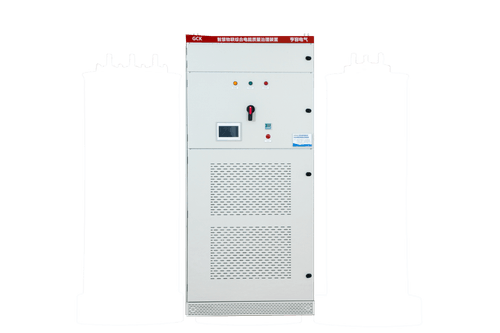
Smart IoT Power Quality Monitoring Device with Cloud-Based Control and Analysis
Compensation capacity: APF (400A per cabinet), SVG (400kvar per cabinet)
Working voltage: 380V (-20%+20%)
Operating frequency: 50Hz (-10% to +10%)
Current transformer: 100:5 to 10000:5
The installation position of the CT can be selected on the load side or the power grid side
Harmonic compensation: 2nd to 50th
Harmonic filtering rate: It exceeds the requirements of the "JB/T11067-2011 Low-Voltage Active Power Filter Device" standard
Reactive power compensation: Adjustable from -1 to +1 (within the equipment capacity range)
Compensation for three-phase unbalance: 100% unbalance complete compensation
Communication methods: RS485, Modbus protocol
Fault alarm: Yes, up to 500 alarm messages can be recorded
Monitoring: Supports independent monitoring of each module/centralized monitoring of the entire machine
Full response time: ≤20ms
Active power loss: ≤2.5%
Heat dissipation method: Intelligent air cooling
Noise: ≤60dB
Protection functions: over twenty types of protection including overvoltage, undervoltage, overheating, overcurrent, short circuit, etc
Operating temperature: -10℃ to +50℃
Altitude: < 5,000 meters (For every additional 100 meters ab
Product Overview
The HRASC series of smart Internet of Things integrated power quality management devices are a new generation of harmonic control solutions that dynamically filter out harmonics. They are connected to the power grid in parallel and, by real-time detection of the harmonic and reactive components of the load, use PWM conversion technology to inject currents of equal magnitude but opposite direction to the harmonic and reactive components into the power supply and distribution system Realize the functions of suppressing harmonics and dynamically compensating reactive power. It is applicable to industries such as electrified tracks, rail transit, petrochemicals and natural gas, power, steel, water treatment, office and commercial buildings, etc.
Function description and working principle
The principle of harmonic filtering
The APF collects current signals in real time through external current transformers, separates the harmonic parts through internal detection circuits, and generates compensation currents with the same magnitude and opposite phase as the harmonics in the system through IGBT power converters, thus achieving the function of filtering out harmonics. The output compensation current of APF changes dynamically and accurately according to the harmonic quantity of the system, so there will be no problem of overcompensation. In addition, the APF has an overload protection function inside. When the harmonic quantity of the system exceeds the filter capacity, the device can automatically limit the output to 100% of the rated capacity without causing overload.
The principle of reactive power compensation
SVG generates capacitive or inductive fundamental current through IGBT power converters based on the reactive power of the system to achieve the purpose of dynamic reactive power compensation. The compensation target value can be set through the operation panel, without overcompensation, and the compensation is smooth, without causing inrush current impact on the load and power grid.
The principle of compensating for three-phase imbalance
Based on the system current, APF/SVG extracts the unbalanced components. The three phases emit currents of equal magnitude but opposite phase to the unbalanced components. By compensating the unbalanced parts to zero, the unbalanced three-phase currents can be corrected to balanced three-phase currents.
Product features
The modular design ensures that the failure of any module will not affect the normal operation of other modules, greatly enhancing the reliability of the entire machine. It can achieve smooth capacity expansion with multiple units directly operating in parallel. When multiple units are expanded, the master-slave control mode is adopted. When multiple modules are connected in parallel, all modules can share a set of current transformers.
It can simultaneously filter out odd harmonic currents ranging from 2 to 50 times or less. According to requirements, 13 types of harmonic segments for filtering can be set. When the distortion rate of the load current is greater than 20%, the filtering rate shall not be less than 85%. When the distortion rate of the load current is less than 20%, the filtering rate shall not be lower than 75%. Reactive power compensation can make the power factor reach 1. It can correct three-phase current imbalance to complete balance.
It adopts the fifth-generation IGBT of imported international well-known brands, which can automatically adjust the output according to the harmonic current of the load and perform dynamic filtering.
It adopts the military-grade FPGA control chip from Xilinx of the United States, featuring fast operation speed and high reliability.
It adopts a layered design, preventing dust, rain and dew from adhering to the circuit board, making it suitable for use under harsh working conditions.
Filtering, reactive power compensation and three-phase unbalance compensation can be selected one or more times, and the priority order of the functions can be set.
The sliding window iterative DFT detection algorithm is adopted, which features a fast calculation speed, an instantaneous response time of less than 0.1ms, and a device compensation full response time of less than 20ms.
The output filter is connected to the power grid in an LCL structure, and its own high-frequency carrier will not be fed back to the power grid, thus causing no interference to other equipment in the distribution system.
It is equipped with complete protection functions, including overvoltage, overcurrent, overheating, short circuit and other comprehensive protection functions, and also has a system self-diagnosis function.
It is equipped with a soft-start control loop to prevent excessive inrush current at the moment of startup and limit the current within the rated range.
By adopting a reliable current-limiting control link, when the current to be compensated in the system exceeds the rated capacity of the device, the device can automatically limit the current to 100% capacity output to maintain normal operation and will not experience faults such as overload and burnout.
The main circuit adopts a three-level topology structure, featuring high output waveform quality and low switching loss.




